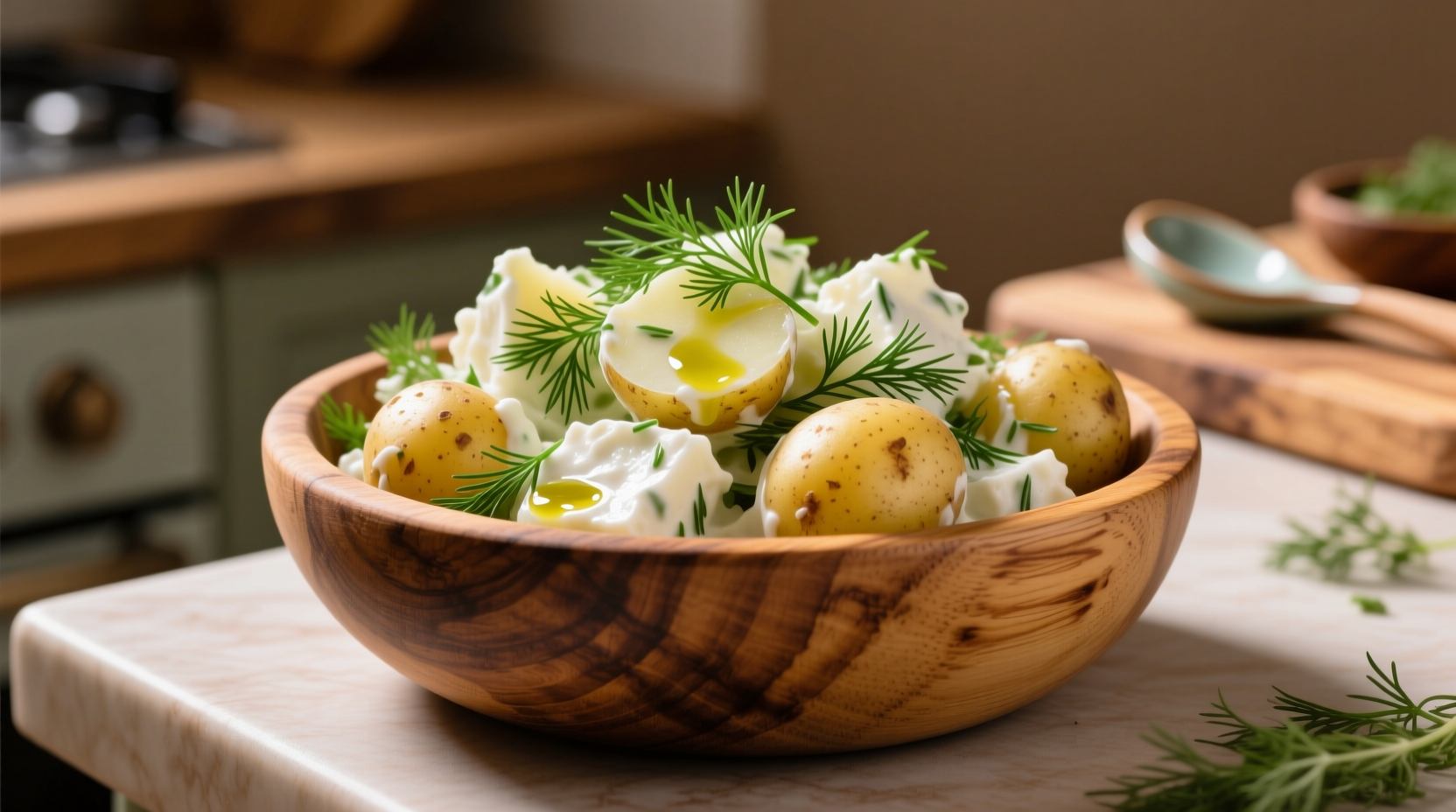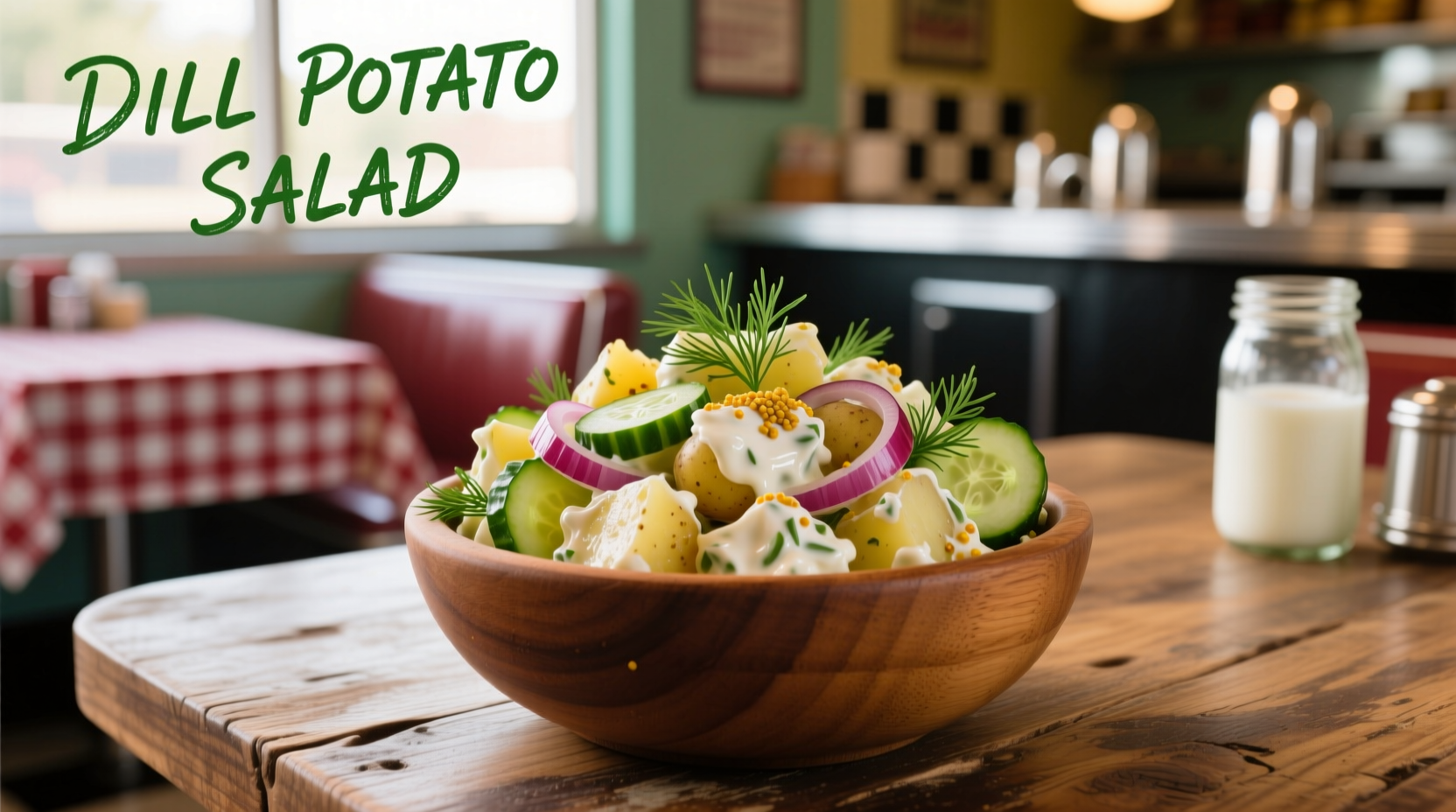Why Dill Elevates Your Potato Salad Game
While traditional American potato salad relies heavily on mayonnaise, European-inspired dill potato salad offers a lighter, more refreshing alternative that showcases the herb's unique flavor profile. Fresh dill contains compounds like carvone and limonene that create its distinctive grassy, slightly citrusy taste that pairs exceptionally well with the earthy sweetness of potatoes.
Food science research from the US Department of Agriculture confirms that dill's volatile oils remain most potent when added after cooking, which is why our method incorporates fresh dill at the final stage. This preserves the herb's bright flavor that would otherwise dissipate during prolonged heat exposure.

From Medieval Gardens to Modern Picnics: The Evolution of Dill in Potato Salads
Dill's journey in European cuisine spans centuries, evolving from a medicinal herb in medieval monastic gardens to a staple in Scandinavian and German culinary traditions. When potatoes arrived in Europe from the Americas in the 16th century, they gradually incorporated into existing herb-based preparations.
| Historical Period | Dill Usage | Potato Salad Evolution |
|---|---|---|
| 1500-1700 | Medicinal purposes, fish preservation | Potatoes not yet integrated into European cuisine |
| 1700-1850 | Common in German & Scandinavian cooking | Early vinegar-based potato salads emerge |
| 1850-1950 | Standard ingredient in Northern European cuisine | Dill becomes signature flavor in German Kartoffelsalat |
| 1950-Present | Global popularity in fresh preparations | Distinct regional variations develop worldwide |
Your Step-by-Step Path to Perfect Dill Potato Salad
Ingredient Selection: What Makes the Difference
Not all potatoes behave the same in salad preparations. Waxy varieties like Yukon Gold, fingerling, or red potatoes maintain their shape better than starchy Russets when cooked and dressed. The University of Minnesota Extension confirms that waxy potatoes contain 16-18% dry matter compared to 20-22% in starchy varieties, making them ideal for salad applications where structural integrity matters.
The Critical Cooling Process Most Home Cooks Skip
Allowing dressed potatoes to rest for at least 2 hours (preferably overnight) transforms your salad from good to exceptional. During this resting period, the potatoes absorb the dressing flavors while the starches retrograde, creating a more cohesive texture. This scientific process, documented by food researchers at Cornell University, explains why potato salad often tastes better the next day.
Regional Variations Worth Trying
Dill potato salad manifests differently across culinary traditions:
- German Kartoffelsalat: Vinegar-based with broth, featuring bacon and minimal mayo
- Scandinavian Style: Lighter dressing with apple cider vinegar, often includes capers
- American Adaptation: Hybrid approach blending mayo with vinegar for balanced creaminess
When Dill Potato Salad Shines: Perfect Occasions and Pairings
This versatile side dish excels in specific contexts where its refreshing qualities complement the meal:
- Summer gatherings: Stays fresh without refrigeration for several hours (unlike mayo-heavy versions)
- Barbecue menus: Cuts through rich, smoky flavors of grilled meats
- Lighter meal pairings: Complements fish, chicken, or vegetarian main courses
- Cold buffet service: Maintains texture better than traditional potato salads
Avoid serving dill potato salad with strongly flavored dishes that would overwhelm its delicate herb notes. The USDA Agricultural Research Service notes that dill's flavor compounds can be masked by overly spicy or heavily seasoned main courses.
Common Mistakes That Ruin Dill Potato Salad
Even experienced cooks make these critical errors that compromise texture and flavor:
- Overcooking potatoes: Results in mushy texture that falls apart when mixed
- Adding dressing while hot: Causes vinegar to evaporate and potatoes to absorb too much liquid
- Using dried dill instead of fresh: Dried dill has only 30% of the flavor compounds of fresh
- Skipping the resting period: Prevents proper flavor integration and texture development
Make-Ahead Tips for Stress-Free Entertaining
Dill potato salad is an ideal make-ahead dish. Prepare components separately and combine 4-6 hours before serving:
- Cook and cool potatoes (store covered in refrigerator)
- Prepare dressing (keeps for 3 days refrigerated)
- Chop vegetables and herbs (store separately)
- Mix everything 4-6 hours before serving for optimal flavor absorption
Properly stored in an airtight container, dill potato salad maintains quality for 3-4 days. The vinegar-based dressing actually helps preserve the potatoes longer than mayo-based versions.











 浙公网安备
33010002000092号
浙公网安备
33010002000092号 浙B2-20120091-4
浙B2-20120091-4